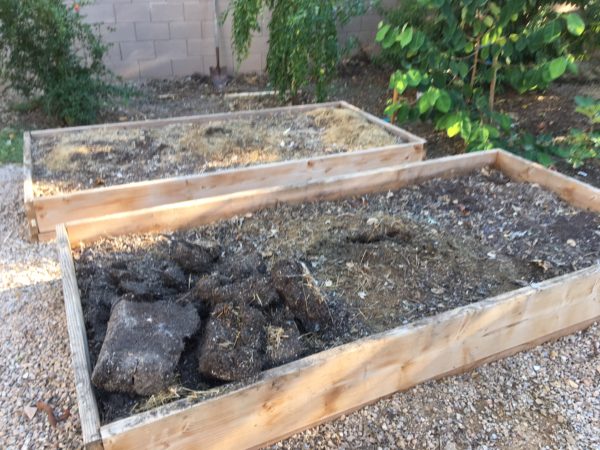Getting your Raised Bed Ready for Planting Season

Planting season is an exciting time of the year. Everything becomes a blank slate and you get to prepare for the upcoming harvest. It does take a bit of preparation and some hard work to ensure your bounty will be plentiful. When it comes to raised bed gardens, there are a few things that are important to do before planting those seeds. Here is a step by step process that I use every time I prepare for a new planting season.
- Remove the old plants- Any dead or old plants from last season should be removed. You don’t want any bugs that may have been on the plants to continue to multiply in your garden. Make sure all the weeds are replaced. When cleaning out the box, work from outside the box so you aren’t standing on top of the soil compacting it down. A good loose soil promotes air flow to the roots and proper drainage.
- Inspect the Box- Make sure your raised bed is still in good shape and able to hold the soil in place. Look for any screws that may need to be tightened or replaced on the corners.
- Top off the Bed- Over time, the soil level decreases due to erosion while watering your plants. Sometimes the soil level can decrease several inches. Get some high quality soil to add to your raised bed. Good soil is key to gardening success. Some of the cheap bagged soil from big box stores, have been sitting for a long time, and is lifeless soil. I purchase garden soil from a local company, so the soil is fresher. A living soil contains microbes, worms, and other living things that help to keep the soil fertile. I recommend layering the new soil versus tilling the soil. Tilling the soil can be disruptive to the soil life.
- Use Amendments- I top my soil off with amendments that will continue to feed the soil life and get my plants a kick start. I will top my soil off with things like worm castings, compost, or aged manure. Check out my product recommendations here. Coconut coir can be great to add to help retain consistent moisture. Problems can occur in plants when watering is inconsistent.
- Water it In- After I add all the amendments and new soil to the raised bed, I ensure that everything is thoroughly watered in. This helps to bind everything together and get the microbes moving.
- Have a plan- Figure out what you want to plant or what can be planted for that time of the year. In Phoenix we have two major growing seasons, so things like Broccoli need to be planted in the fall, whereas melons have to be planted in the spring. It’s important to have a basic understanding of your climate and the things you intend to grow. Think about companion planting. Some plants work well planted together, while others don’t. It can be a good idea to consider planting some flowers and herbs that deter pests around the edge of the raised bed. Take into consideration how much space each plant will need to thrive.
- Sow your seeds- Take a look at Seeds Now for some amazing quality seeds. Check the planting instructions on your seed packets. Some things to consider when sowing seeds are depth of the seed while sowing or if the seeds should be planted it in rows or mounds. Take a look at spacing requirements, so plants don’t get too crowded. It’s important to have some order within your raised beds versus just tossing the seeds all over the place.
Please comment below on anything you enjoyed from this post or experiences with prepping a raised bed.

